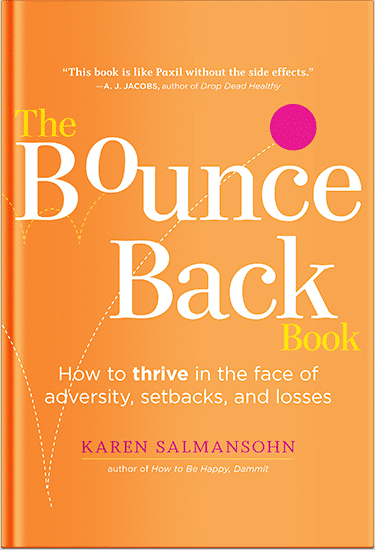 Hyposensitivity is an under-responsiveness to sensory stimuli that would normally register a reaction from a neurotypical brain. People who are hyposensitive need more intense input to register a sensation, which often leads to sensory-seeking behaviors.
Hyposensitivity is an under-responsiveness to sensory stimuli that would normally register a reaction from a neurotypical brain. People who are hyposensitive need more intense input to register a sensation, which often leads to sensory-seeking behaviors.
For instance, a preference for strong flavors or loud noises may be a sign of hyposensitivity. If you enjoy listening to music at deafening volumes or prefer foods that are exceptionally spicy, sour, or crunchy (like chewing ice or hard candy), your sensory system may require a high volume of input to register sound (auditory hyposensitivity) and taste/texture (gustatory hyposensitivity).
Hyposensitivity can affect any of the senses, including those we’re less aware of, like body awareness (proprioception) or internal body signals (interoception). So, even if you’re not into loud sounds and spicy foods, it doesn’t mean your brain isn’t wired this way.
Today, we’ll take a deep dive into what hyposensitivity is and how to live with it.
Signs of Hyposensitivity
Hyposensitivity is not usually disruptive, but there is a strong, well-documented link between hyposensitivity (sensory under-responsiveness) and Autism Spectrum Disorder (ASD). Atypical responses to sensory input (either hypo- or hyper-sensitivity) are one of the diagnostic criteria for ASD in the DSM-5.
Understanding hyposensitivity in autism and how it manifests it’s crucial for parents and educators, as it explains why a child might not respond to their name or seem unaware of loud noises.
It’s also essential to understand that the sensory processing differences in autistic individuals are highly variable. A person may be hyposensitive in one sense (e.g., needing intense sound) and hypersensitive in another (e.g., avoiding light).
You can also have hyposensitivity and not be on the autistic spectrum. If this is the case, it helps to know how it impacts your life. Here are some of the signs to keep in mind:
- Touch (Tactile) – Craving deep pressure (e.g., tight hugs), frequently touching objects/people, a high pain tolerance, or not noticing minor injuries, or messy hands/face.
- Sound (Auditory) – Talking loudly, enjoying excessively loud music or TV, needing instructions repeated, or seeming oblivious to certain sounds.
- Sight (Visual) – Being drawn to bright lights, vibrant colors, or spinning objects; sometimes focusing intently on tiny details or patterns.
- Taste/Smell – Seeking strong flavors (very spicy, sour, or salty), licking/smelling non-food items, or not noticing bad odors.
- Movement/Balance (Vestibular) – Craving fast, intense movement, like spinning, swinging, or jumping for long periods without getting dizzy, or being constantly in motion.
- Body Awareness (Proprioception) – Bumping into things, falling frequently, playing too roughly, or having a weak grasp and dropping things often (due to difficulty sensing muscle force).
- Internal Signals (Interoception) – Not noticing hunger, thirst, or the need to use the bathroom until it’s urgent, or being unaware of internal signs of illness or pain.
Wrap Up: Integrate Hyposensitivity Into Your Life
If you have some of the symptoms but they’re nothing more than mild inconveniences, there are ways to provide safe, controlled, and intentional sensory input before your system starts craving it in disruptive ways.
Do a bit of research, talk to your healthcare provider, and learn more about how your sensory system works. You’re not broken; you’re just wired differently than neurotypical people. And that’s totally normal, in the grand scheme of things.
P.S. Before you zip off to your next Internet pit stop, check out these 2 game changers below - that could dramatically upscale your life.
1. Check Out My Book On Enjoying A Well-Lived Life: It’s called "Your To Die For Life: How to Maximize Joy and Minimize Regret Before Your Time Runs Out." Think of it as your life’s manual to cranking up the volume on joy, meaning, and connection. Learn more here.
2. Life Review Therapy - What if you could get a clear picture of where you are versus where you want to be, and find out exactly why you’re not there yet? That’s what Life Review Therapy is all about.. If you’re serious about transforming your life, let’s talk. Learn more HERE.
Think happier. Think calmer.
Think about subscribing for free weekly tools here.
No SPAM, ever! Read the Privacy Policy for more information.
One last step!
Please go to your inbox and click the confirmation link we just emailed you so you can start to get your free weekly NotSalmon Happiness Tools! Plus, you’ll immediately receive a chunklette of Karen’s bestselling Bounce Back Book!


 Hyposensitivity is an under-responsiveness to sensory stimuli that would normally register a reaction from a neurotypical brain. People who are hyposensitive need more intense input to register a sensation, which often leads to sensory-seeking behaviors.
Hyposensitivity is an under-responsiveness to sensory stimuli that would normally register a reaction from a neurotypical brain. People who are hyposensitive need more intense input to register a sensation, which often leads to sensory-seeking behaviors.